#my very non expert opinion
Text
Bitching time n°1 :
I just wish Laika studio would stop whatever the hell they have been doing in the last decade, it's so heartbreacking. The cgi and the insane compositing are getting so bad, at his point most people cannot even tell that there is stop-motion in there.
They have such amazingly talented animators, set and puppet builders, just give them an interesting script and let their craft speak for itself!
Their youtube channel is full of some of the most upsetting behind the scene content ever made because you get to look at how amazing everything looked before they made it extremely boring.
( Those water tests were so good, what did they do this, it's maddening !!! )
youtube
At this point I feel like some of the higher-ups just fundamentally do not understand what makes stop-motion interesting and are just trying to compete with big animation studios.
( Also you do not need 100000 facial expressions/deformations to have great expressivity, look at my man Jiří Trnka ! Coraline still kinda rules though )
#sorry for the bad english#10 posts in this blog and i'm already being a hater sorry guys#bitching time#laika#my very non expert opinion
1 note
·
View note
Text
I like saying "in my expert opinion" before spouting off my views on something I have absolutely no authority on.
#i do this while watching very poorly made movies#certified expert by my own authority#its kinda entertaining honestly#like the reactions#but...youre not an expert#yeah and#neither are you#opinions#in my expert opinion#in my non expert opinion
6 notes
·
View notes
Text
Palestinian History Between Great Powers - Part 1
From Bronze Age to Ottoman Palestine
I started writing this article months ago but as it deserves proper research, it took me a long while, and at one point I started questioning is this helpful anymore. I thought it's obvious at this point to anyone not willfully ignorant that what we are seeing in real time is a genocide, and I'm not going to convince those who are willfully ignorant. I decided to finish it anyway since I do feel obligation to do something and maybe providing some accessible historical context is what I'm capable of doing. Even if I probably won't change any hearts and minds, I think the least we can do is not forget Palestinians and fall into apathy. And at the very least more understanding of the situation is always better even when we already oppose this genocide.
This is quite out of my area of focus, so I will be doing more of a general overview of the history and link in depth sources by more knowledgeable people than try to become an expert on this. My purpose is to offer an accessible starting point for the history of Palestine to help people put historical and current events into their proper context. I don't think the occupation and genocide in Palestine pose complex moral questions - it's pretty simple in my opinion that genocide, apartheid and colonialism are wrong and need to stop for peace to be possible - but the history is complex and it's understanding needs quite a lot of background. I will do my best to represent the complexity accurately and fairly while keeping this concise. Since there is a lot of history, even if this is very general overview, it's still very long, so I did need to cut this in two parts. First part will be covering everything to the beginning of WW1, second part the British Mandate period and Israel period.
Bibliography
I'm linking my sources and further reading here so it's easy to check some specific resources even if you don't want to/have time to read 5 000 years of history right now. Because there's so much misinformation and propaganda, I read as much as I could from academic sources, linked at the top here. They are really interesting and delve deeply into specific subjects so I do recommend checking out anything that peaks your interest (Sci-Hub is your friend against paywalled papers and in JSTOR you can make a free account to access most papers). Some of them I didn't really end up using, but I still linked them here since they provide some additional context that wouldn't fit in this overview. At the end there's some accessible resources (youtube videos, podcasts etc.) which are relevant and I think good.
Pre-Ottoman Era
On The Problem of Reconstructing Pre-Hellenistic Israelite (Palestinian) History - Critique of Biblical historical narratives
Canaanites and Philistines
Archaeological Sources for the History of Palestine: Between Large Forces: Palestine in the Hellenistic Period - Everyday life in Hellenistic Palestine
Ottoman Era
Rediscovering Ottoman Palestine: Writing Palestinians into History - Critique of politics of Ottoman Palestine historiography
The Peasantry of Late Ottoman Palestine
Consequences of the Ottoman Land Law: Agrarian and Privatization Processes in Palestine, 1858–1918
The route from informal peasant landownership to formal tenancy and eviction in Palestine, 1800s–1947
The Ottoman Empire, Zionism, and the Question of Palestine (1880–1908)
Origins of Zionism
Christian Zionism and Victorian Culture
Zionism and Imperialism: The Historical Origins
The Non-Jewish Origin of Zionism
Zionism and Its Jewish "Assimilationist" Critics (1897-1948)
The Jewish-Ottoman Land Company: Herzl's Blueprint for the Colonization of Palestine
Books
Boundaries and Baraka - Chapter II of Muslims and Others in Sacred Space - Local syncretic religious beliefs of Muslim and Christian Arabs in Palestine
Further "reading"
Israelis Are Not 'Indigenous' (and other ridiculous pro-Israel arguments) - Properly cited youtube video on settler colonialism of Zionism (Indigenous is defined here in postcolonialist way, in contrast with the colonialist, the video doesn't argue that diaspora Jews didn't originate from the Palestine area)
Gaza: A Clear Case of Genocide - Detailed Legal Analysis - Youtube video detailing current evidence on the ongoing genocide and assessing them through international law
What the Netanyahu Family Did To Palestine: Part 1 , Part 2 - Two part podcast episode of Behind the Bastards about Israel's history and Netanyahu Family's involvement in it with an expert quest
History of Israeli/Palestinian conflict since 1799 - Timeline of Palestinian history by Al Jazeera with documentaries produced by Al Jazeera for most of the entries in the timeline
Ancient Era (33th-4th century BCE)
Palestine's location in the fertile crescent, the connecting land between Africa and Asia and the strip of land between Mediterranean and Red Sea means since the earliest emergence of civilizations it has been in the middle of great powers. Thorough it's history it has been conquered many, many times for it's strategic value. Despite the changing rulers and migrating groups there has been a continuous history history of a people, which has changed, split and evolved, but not fully disappeared or replaced at any point, which is quite rare of a history spanning thousands of years.
Speakers of Semitic languages are the first recorded inhabitants of Palestine. At least from Bronze Age (c. 3300-1200 BCE) onward they inhabited Levant, Arabian peninsula and Ethiopian highlands. Semitic languages belong in the Afroasiatic language group, which includes three other branches; ancient Egypt, Amazigh languages and Cushitic languages of African Horn. Most prominent theories of the origins of proto-Afroasiatic is in Levant, African side of Red Sea or Ethiopia. In the Bronze Age the Levant's Semitic speakers were called Canaanites and there was already urban settlements in Early Bronze Age. Egypt had been extending it's control over Canaan for a while and in Late Bronze Age, 1457 BCE, it took over Canaan. Gaza, which had had habitation for thousand years already, became the Egypt's administrative capital in Canaan. Canaan stayed as Egypt's province until the Late Bronze Age collapse c. 1200-1150 BCE, when Egypt started losing it's hold on Levant. Egypt eventually retreated from Canaan around 1100 BCE. The causes of Late Bronze Age collapse are unknown, but theories suggest some kind of environmental changes that caused destruction of cities and wide-spread mass migration all around the East Mediterranean Bronze Age civilizations.
Canaanites was not what most of the people called themselves, but rather what the surrounding empires, especially Egypt and Hittites in the north, called them. Philistines appear in Egyptian sources around the Late Bronze Age collapse as raiders against Egypt, who were likely populating southern parts of Canaan, the Palestine area. Several groups with mutually intelligble languages emerged after Egypt left the area: in Palestine area Philistines, Israelites, in Jordan are Ammonites, Moabites and Edomites, and in Lebanon area Canaanites, who were called by Phoenicians by Greeks. Israelites have been theorized to split from Philistines, possibly after Aegonean migrants during the Late Bronze Age collapse influenced the culture of the costal Philistine city states, and/or through Israelites development of monotheistic faith. During Iron Age these different groups descendant from Caananites had their own kingdoms. In the area of Palestine there was two Israelite kindgoms, Kingdom of Judah is the highlands of Judah, were Israelites likely originated, and Kindom of Israel or Samaria north to it, as well as Philistine city states in the coast around the area of current Gaza strip.
Earliest historical evidence of Israel is from mid 9th century BCE and of Judah from 7th century BCE, though Israelites as a group were mentioned earlier. It's entirely possible the kingdoms predate these mentions, but the archaeological evidence suggests likely not by much. Israel was conquered by the Neo-Assyrian empire in 722 BC, so it's entirely possible kingdom of Judah was created by retreating Israelites of the earlier kingdom. The remaining Israelites under Assyrian rule came to be known as Samaritans, marking also the split of Jewish faith into Judaism and Samaritanism. Neo-Assyrian lingua franca was Aramaic, a Semitic language from southwest Syria, which became the major spoken language in Samaria. Judah became a vassal state of Assyrians and later Babylonians. After a rebellion Babylonians fully conquered Judah in 586-587 BCE and exiled the rebels, though more recent historical study suggests it targeted the rebelling population and was not a mass exile. In 539 BCE Babylon and by extension Judah was conquered by Persian Achaemenid empire, which allowed the exiles to return and rule Judah as their vassals. Persia also conquered Samaria and Philistines. Aramaic was also the official language of the both Neo-Babylonian and Achaemenid empires and replaces Old Hebrew as spoken language in Judah too, though Old Hebrew continued to be written language of religious scripture and is known today as Biblical Hebrew. Otherwise in the Palestine area there were Edomites, who migrated to the southern parts of former Judah kingdom, and Qedarites, a nomadic Arabic tribal federation, in southern desert parts.
Biblical narratives tell this early history very differently, and for a long while, those were used as historical texts, but more recent historical study has cast a doubt on their usefulness in historical inquiry. Even more recent archaeological DNA studies (like this and this) have supported the historical narratives constructed from primary historical texts.
Antique Era (4th century BCE - 7th century CE)
Under Persian rule the people in the Palestine area had a relative amount of autonomy, which lasted about 200 years. In the 330s BCE Macedonians conquered Levant along with a lot of other places. The Macedonian empire broke down quickly after the death of Alexander the Great, and Levant was left under the control of the Seleucid empire, which included most of the Asian parts of the Macedonian empire. During this time the whole Palestine area was heavily Hellenized. In the 170s BCE the Seleucian emperor started a repression campaign against the Jewish religion, which led to a Maccabean Revolt in Judea, lasting from 167-160 BCE until the Seleucids were able to defeat the rebels. It started with guerilla violence in the countryside but evolved into a small civil war. Defeat of the rebelling Maccabees didn't curb the discontent and by 134 BCE Maccabees managed to take Judea and establish the Hasmonean dynasty. The dynasty ruled semi-autonomously under the Seleucian empire until it started disintegrating around 110 BCE, and Judea gained more independence and began to conquer the neighbouring areas. At most they controlled Samaria, Galilee, areas around Galilean Sea, Dead Sea and Jordan River between them, Idumea (formerly Kingdom of Edom) and Philistine city states. During the Hasmonean dynasty Judaism spread to some of the other Semitic peoples under their rule. It didn’t take long for the rising power of the Roman Republic to make Judea into their client state in 63 BCE. Next three decades the Roman Republic and Parthian Empire would fight over control of Judea, which ended by Rome gaining control and disposing of the Hasmonean dynasty from power. It was a client state until 6 CE Rome incorporated Judea proper, Samaria, Idumea and Philistine city states into the province of Judea.
The Jewish population was very much discontent under Roman rule and revolted frequently through the first century or so. It led to waves of Jewish migration around the Mediterranean area, which would eventually lead to the formation of European and North-African Jewish groups. The Roman emperor’s decision to build a Roman colony into Jerusalem, which they destroyed along with Second Temple while squashing the previous revolt, provoked a large-scale armed uprising from 132-136 among Judean Jews, which Rome suppressed brutally. Jerusalem was destroyed again, Jews and Christians were banned from there, and a lot of Judean Jews were killed, displaced and enslaved. Rome also suffered high losses. Jews and Christians hadn’t yet fully separated into different faiths yet, but this strained their relations as Christians hadn’t supported the uprising. Galilee and Judea was joined into one province, Syria Palaestina. Galilean Jews hadn’t participated in the revolt and had therefore survived it unscathed, so Galilee became the Jewish heartland. During the Constantine dynasty, in the first half of the 4th century, when Christianity was the Roman state religion, Jerusalem was rebuilt as very Christianized. After the Constantine dynasty the Jewish relations with Rome were briefly improved by a sympathetic emperor, until Justinian came into power in 527 and began authoritarian religious oppression of all non-Christians, casting the whole area into chaos. Samaritans rebelled repeatedly and were almost fully wiped out, while Jews joined forces with several foreign powers in an attempt to destabilize Byzantium rule. By 636 the first Muslim Caliphate emerged as victors over the control of Palestine.
Muslim Period and Crusades (636-1516)
For more than 300 years under the rule of Muslim Caliphate, Palestine saw a much more peaceful period, with relative freedom and economic prosperity. Christianity continued to be the majority religion and Christians, Jews and usually Samaritans were considered People of the Book, who were guaranteed religious freedom. Non-muslims though had to pay taxes and depending on the caliph had more or less restrictions posed upon them. The position of Samaritans as People of the Book was unstable and at points they were persecuted. For the position of Jews it was a marked improvement, and after the expulsion of Jews from Jerusalem by Rome in the 2nd century, they were finally allowed to return. Jerusalem became a religious center for the Muslims too, as it was considered the third most holy place of Islam. Cities, especially Jerusalem, saw Arab immigration. The rural agricultural population was mostly Aramaic speaking, though even while Palestinian Arabs had mostly been bedouins in the southern deserts, there were few Arabic villages from the Roman era. People of the Book were protected from forced conversions, but over time conversions among the Christian population slowly increased, until Islam became the majority religion. Cities became Arabicized and slowly Arabic (also Semitic language) replaced Aramaic as the majority language. Towards the end of the first millennium persecution of Christianity increased with the threat of Byzantium.
In 970 a competing dynasty, Fatimids, conquered Palestine beginning a new era of continuous warfare and conquest by foreign powers. In the beginning of the new millennium Palestine was conquered by the Turco-Persian Seljuk empire for a couple of decades, recaptured by Fatimids for only a year, until the Crusaders took Palestine in 1099. During the next two centuries Palestine exchanged hands several times between the Crusaders and the Egyptian Ayyubid Sultanate. After internal struggle the Ayyubid dynasty was overthrown by the mamluk military caste and them in lead, the Sultanate secured Palestine. First they repelled the invading Mongol empire in 1260 and by 1291 they had defeated the remnants of the Cusaders and their Kingdom of Jerusalem. The period was devastating to the Palestinian populations, cities and economic life. The Crusaders especially committed numerous massacres against non-Christians and under Muslim rule Christians were persecuted and forcibly converted. The next two centuries under the Mamluk Sultanate were peaceful and Christian and Jewish communities were afforded some self-governance and relatively high religious freedom for being recognised as People of the Book again. The state had a more contentious relationship with Christians as the wars with the Crusaders were still looming between Christians and Muslims, and at some points Christians faced persecution and forced conversions.
Ottoman Period (1516-1917)
The Ottoman Empire gained dominance in western Asia over the Mamluk Sultanate during the late 15th century and conquered Palestine in 1516. It became a great imperial power in Asia and Europe for two centuries and in the 18th century started a slow decline, eventually becoming the "Sick man of Europe". The Ottoman Empire was very decentralized and under it Palestine was at first ruled by three Palestinian families semi-autonomously. The Ottoman state didn’t pay much attention to economic development, as they considered it contrary to their chivalric culture, so they instead attracted foreign businesses with the capitulation system. Capitulations were treaties between Ottomans and a foreign power by which the citizens of that foreign power were under their jurisdiction inside Ottoman borders. This guaranteed safety and religious freedom for non-Muslim merchants and exempted them from any additional taxes applying to foreigners and non-Muslims, which encouraged them to build businesses in the Ottoman Empire. Ottomans also intentionally attracted European Jews, who faced persecution and pogroms, and had built effective international trade networks through the tight knit diaspora communities. Jews and Christians had quite well secured position in the empire as People of the Book, but Samaritans were persecuted after they had sided with the Mamluk Sultanate against Ottomans and later for being considered "pagans". City elites adopted Turkish culture, while in rural areas peasant villages and Bedouin clans remained Arabic. The rural areas were very much self-governing as both villages and Bedouin clans were fairly self-reliant with their own political structures. Villages consisted of clan-like family groups, hamulas, and the village lands were distributed between their collective ownership.
In the 19th century the Ottoman Empire was leaving behind European imperial powers in economic and military development. With the rise of the international capitalist markets, capitulation approach, which had worked well for the empire in previous centuries, was extended to markets as a very laissez faire economic policy. This did not lead to hoped economic growth however, but rather deindustrialization. The Ottoman Empire opened itself to markets it couldn’t compete in and its resources were then easy to exploit by stronger economies. The other powers, such as the European powers, avoided this by first cultivating strong national industries with protectionist policies, and then opened to international markets. The capitulation system also became a political liability the way it interacted with the protégé system. The Ottoman Empire had agreed to allow some European powers to give their protection over certain minority religious groups (mostly Christian groups) in the Empire, allowing members of those groups to claim citizenship of their protectorate nation. This had allowed those Ottoman citizens to claim the benefits of the capitulation system and cultivated trade and business for the Empire. In the 19th century the European powers, notably France, British Empire, Germany and Russia, turned their interests towards Levant which was important for their access to their colonial interests in Asia and Africa. They had a vested interest in the continuing power of the weakening Ottoman Empire, which they believed they could control through economic dominance and the protégé system. It became a competition on who could gain the most influence in the Ottoman Empire. In Palestine this led to a change in class dynamics. Christian protégés of European imperial powers were given tax exemptions from the increasing taxes, which were implemented to balance the national deposit, and better opportunities to gain wealth from international trade, turning the urban Christian Arabs into elite.
In 1832 Egypt invaded Palestine, marking a point of more rapid decline of Ottoman rule. Egypt attempted to “modernize” Palestine, which was considered backward, but Egypt's policies, especially conscription, were considered intrusive. The local self-ruling clans and families were resistant to outside powers and with their sway over the population, they rose to a popular uprising after two years of Egyptian rule. The suppression of the uprising devastated many villages and Egypt still failed to enforce order and halt violence. In 1840 Britain intervened, returning its control back to the Ottomans. They didn’t yet have capitulations with the Ottomans and were concerned over the other European powers gaining influence over the aging empire, so in return for their military assistance, they gained capitulations and named Jews and Protestants as their protégés in Levant. Palestine rapidly opened to the international markets with the increase in capitulations combined with the laissez faire fiscal policies of the empire, allowing European powers to turn Palestinian cities, especially in the coast, to centers of trade. In 1858 the Ottoman Empire also attempted to privatize land ownership to increase agricultural production and profitability in order to help with their financial troubles. Most Palestinian land was public land, but in practice owned informally by the villagers cultivating it. As long as they paid taxes, they couldn’t be evicted, which rarely happened in those cases either, and their rights to the land were hereditary. The land reform codified and formalized land ownership and removed barriers to non-villagers gaining ownership of peasant land, laying groundwork for commodifying land. The Ottoman Empire also allowed foreigners to purchase private land. This didn’t immediately lead to large-scale transfer of land ownership, but increasing taxes impoverishing the peasantry and indebting them transferred land from its cultivators to urban absentee landlords. Peasants started to turn into landless tenants and a new type of large estates were established.
Birth of Zionism
The British pushed for more control over Levant, since they wanted to secure their access to India and their colonial ventures in Africa. They didn’t have much interest in colonizing Levant themselves, which is why they were interested in backing the Ottoman Empire and gaining stronger control over it via European Jewish immigrants. European Jews had been immigrating to Palestine in small numbers for a while for religious reasons, to escape persecution and to take advantage of the economic opportunities offered by the Ottoman Empire. The British though also had religious interests in supporting Jewish migration to Palestine. Since the early 19th century, there had been a growing religious movement of Christian Zionism, who sought to restore Jews into Palestine and then convert them to Christianity to cause the second coming of Jesus and the end times. As you do. They were considered fanatics, even lunatics, for their literal interpretations of prophecy, but they were enthusiastic imperialists and when they expressed the idea of restoration of Jewish Palestine in imperial terms, it gained popular acceptance in Britain. Some of the common talking points originating from Christian Zionism were Jews had the right to Palestinian land for Biblical reasons, the only way to not let the “underdeveloped” agrarian land go to waste was colonialism, and Jews would be a civilizing force in Palestine. While the end goal of Christian Zionists was conversion of Jews, they had Orientalist reverence for Jews, but among the wider imperialist support for these ideas there was in addition an explicitly antisemitic aspect. The imperialists' idea was that Britain, and Europe more broadly, could this way also get rid of the Jews.
The trouble was that at the time there was no wide interest at all among Jews to colonize Palestine. The Jews who were migrating there during the first half of the 19th century did so with all intentions of integrating to the Palestinian society. European Jews had since Enlightenment and the French Revolution gained unprecedented levels of social acceptance and equality (which still wasn’t very much), and liberal assimilationism had become the dominant ideology especially among Jewish elites. Assimilationist Jews considered Judaism a religious identity, not an ethnic one, and they rather identified with their nationality. In the latter half of 19th century Jewish socialism was contesting the liberal Jewish idea that antisemitism could be overcome with individualist approach and instead demanded structural change. During the century it became increasingly clear that the assimilationist approach couldn’t fix antisemitism as racial ideology and exclusionist ethnonationalism were gaining traction and fueling antisemitism, which culminated in the 1880s pogroms in Russia and 1894 Dreyfus Affair in France. These events certainly promoted socialist approach among many Jews, but the Jewish elite were certainly not interested in socialist solutions, where they would lose their elite status, even if for white Christians they were all second class citizens. So instead, like many elites facing the threat of socialism, they turned to nationalism. To the question of how to build a nation from a diverse diaspora, they found the answer from Christian Zionism. Jewish Zionism was distinctly secular, so while they did adopt many religious and biblical narratives and goals of Christian Zionism, they put them in nationalist terms. Their end goal was of course different from that of the millennialist Christians so Jewish Zionism was presented as a practical and rational alternative to utopian fanaticism, but they were still natural allies. Zionism was opposed in the European Jewish communities by both assimilationists and socialists, who both viewed it as countering the efforts of opposing antisemitism, which Zionists saw as an inherently impossible endeavor, and also by Orthodox Jews from a religious standpoint. Orthodox Jews denounced the secularization of the Promised Land, which according to them could only be bestowed by God and couldn’t be a state with secular power.
Before Zionism was fully formalized as a movement, there were proto-Zionist movements in Eastern-Europe as a direct response to the pogroms, with the goal of settling Eastern Jewish refugees to Palestine from 1881 forward. This is considered to be the start of the First Aliyah, the explicitly Zionist mass migrations to Palestine. The funding was secured from the European Jews, and with it the Zionists bought land from the absentee urban landlords with large estates and evicted the tenants in order to form Zionist colonies. This raised concern among Ottoman officials, who had become vary of the European exploitation of their capitulation system, which increased European influence with the immigration of European Jews. They were also concerned about the rising Arab nationalism in Palestine provoked by the European economic exploitation and even more pressingly the peasant displacement. The Ottoman Empire was already facing massive difficulties with nationalist movements in different parts of the empire, like in Armenia. They attempted to restrict Zionist land purchases with legal restrictions and failed.
The 1880s settling to Palestine was still unorganized and leaderless until Theodor Herzl, who is considered to be the founder of Zionism, joined Zionist ranks in mid-1890s and began formulating a colonialist venture in earnest. The British were supportive of the Zionist project, but as long as the Ottoman Empire was in charge of Palestine and the British could extend control over it, they weren’t interested in establishing such a state themselves. So the Zionist movement with Herzl in the lead turned to the Ottoman Empire in 1901. He envisioned the Zionist colonial project as a land company, modeled after the British and Dutch East Indian Companies, which would under imperial blessing operate fairly independently and govern over colonized land. The end goal was to build an ethnonationalist Jewish state and expel the native population. There were even dreams of Jewish empire that would colonize neighbouring countries, “civilize” them and bring them “prosperity”. To persuade the Sultan, Herz proposed to pay for the Ottoman Empire’s depts with European Jewish investments in exchange for allowing the Zionists to settle and govern Palestine. The Ottoman government was well aware of Zionist movement’s end goals and their alliances with European Imperialism, rejecting their proposals.
The Zionists evaded Ottoman restrictions anyway and continued to settle Palestine with British backing. European powers then pressured Ottomans to abolish those restrictions allowing a new wave of Zionist colonialism. The violence and pogroms in Russia had convinced some of the Eastern European Jewish socialists that fighting antisemitism was impossible, so they created Labor Zionism and used the “untouched land” to experiment with utopian socialist communes. In the process they displaced indigenous peasant hamulas, which had often for centuries farmed the land in communal ownership. Mass migration and eviction quickly provoked a predictable opposition in the Palestinian population and spread of Arab nationalist thought. This second wave of Aliyah ended at the First World War, which was also the end of the Ottoman Empire.
#history#palestine#palestinian genocide#palestinian history#colonization#colonial history#zionism#islamophobia#ottoman empire
163 notes
·
View notes
Note
Hi! So I have never done this before but saw people sending you hcs, thought it was fun, wanted to join in! (English is my 2. Language so sorry for the mistakes!)
Mine is that Alastor sucks when it comes to bed time activities. In a lit of fic he is a "natural" and does everything perfect. But I think that it would be really funny, if thats what he thought of himself as well. He has a tendency of thinking too highly of himself, so imagine if his attitude towards sex was the "how hard could it be" approach (no pun intended).
And so, when Lucifer and Alastor somehow end up in bed together, Alastor super confident. He has never done it before, sure, but he knows how pathetic man are when it comes to sexual matters (his opinion) and they are very easy to arouse. And then he will perform the quickest, most mechanical dry af blowjob Lucifer has ever seen. The whole thing is over in a heartbeat, the mood is non existent and Lucifer looks absolutely dumbfounded. He may not even finish, just tells Alastor to stop because this is clearly not working. He says something like "well, that was an experience". Alastor may think for a moment that yes, of course, his majesty must be impressed by his skills and he almost starts patting himself on the back for his performance when Lucifer continues: lets just forget about this. Thanks for the effort I guess.
And Alastor just freezes because what? Is the king of hell saying that it wasnt good? Is he trying to suggest that Alastor is bad at something? Bad at something that Lucifer claims to be an expert at (silver tounge and all that). And this is what really makes him mad lol! Alastor is asexual but he needs to one up Lucifer in every little thing possible. So after a lot of arguing he ends up experiencing the best bj of his entire life & afterlife. And now he is really pissed! He just retreats to the shadows and Lucifer thinks that its finally over.
It was a strange afternoon but hey, it will never happen again, right? Alastor did not get the memo tho. Because even tho Lucifer wants nothing more than to forget, the Radio Demon keeps seeking him out, trying to flirt (badly) and also he insist on showing him "a good time".
Because Alastor never gives up, he tries to learn but its a slow process. Its not an instant success, everytime he makes the king moan, he might be proud of himself, bit it will only last until Lucifer shows him something even better and then he needs to try to be even better! And thats their little dance they do. (Because I am a sucker for happy ending they catch feelings after a while ofc.)
(Also, I think that Lucifer could be sex-favorable asexual. )
👀
#hazbin hotel#radioapple#radio apple#appleradio#alastor#apple radio#lucifer#headcanon#nunalastor asks
102 notes
·
View notes
Text
Ok, I'm gonna start a post idea I had been pondering. If you're either mentally or physically disabled and you have opinions about representation, this is the thread for you!
So, I've been seeing more people trying to tackle the topic of autism in their stories, but I've felt some of it tries to woobify a bit what is to live with autism, or just focus on the more socially acceptable quirks of it. And as someone with autism/ADHD (was suspected of it for most of my life, got it finally diagnosed by my therapist (who specializes in autism and ADHD) last year), sometimes I'd like for people to acknowledge the more unsavoury parts of it, the weird quirks, etc.
So, this post is going to be about that- If you wanna help people understand how your disability/neurodivergency affects your life, feel free to add to it! Just mention what do you have (no need for a full list, just what you consider relevant to the post) and some experiences, quirks, anecdotes or such that you think that are not often seen in stories or media, and that you consider an important part of it. They don't need to be huge things! I encourage people to share just whatever they feel comfortable. My list is gonna be a mix of stuff, but yours can be very different. Let me start!
Clothes and how they feel was surprisingly one of the most disruptive parts of my autism. As a kid, if I was forced to wear something that caused me some bad texture/sensitivity issues, it would significantly affect my behaviour and performance. It took me many years to be allowed to use mostly sportswear. (And it turns out being a "girl" (not anymore) wearing only sportswear tends to cause a whole lot of bullying)
This happens even nowadays. I've found out that non-heeled boots are more comfortable to me than sport shoes, because feeling something against the back of my foot makes me feel overwhelmed. I tend to wear yoga pants under actual pants, because they keep the actual pants' seams from causing sensory issues. There's almost a sort of ritual on how do I need to combine clothes to be able to function "normally", mostly consisting on reducing how much they annoy me.
On that topic, hygiene is actually a huge thing too. As a kid, I wasn't allowed to shower daily. Days I didn't shower, no matter how much I tried to keep my hygiene in other days, were "bad days" to me. I would literally plan hanging out with friends or eating out around the days I was allowed to shower. I could physically feel the difference between the day I showered and the day I didn't (even if I washed my face, armpits, used the bidet, etc).
This is true even nowadays. I can thankfully now shower daily, which isn't recommended by a lot of experts (specially because it can damage your hair and skin), but it's more worth to me than having days where I feel like I shouldn't be seen in public.
Being overwhelmed sucks! Meltdowns are mostly associated with kids, mostly because adults either learn to mask them, or do everything they can to AVOID having that meltdown. I've mostly figured out routines and such. There's this one place we go eat out every other Tuesday- And in the hours we go in, there's a sort of silent corner that is always free. This week's schedule was a mess, so we went yesterday to that same place, and the silent corner was filled with a very loud group. I got extremely overwhelmed. But enough masking drilled to me means I just sat there unable to talk for maybe 30 minutes.
Autistic adults still do have autism and experience often the full spread of traits, they've just found ways to mask, or avoid being in situations where they do need to do that. I've adapted my life and routine to that. But sometimes I land on situations out of my comfort zone that will make me feel just like when I was a kid. I want to freelance online because I'm fully aware I can't perform properly in a public facing job.
Group projects sucked so much. I know they suck for most people, but most times it was easier for me to do the entirety of the project by myself and add the others' names to it than dealing with chasing people for their parts. My college had a 6-months-long massive group project in the last year, with a 7 people group, which obviously I couldn't do alone. The whole experience was so harmful in so many ways I've had several full therapy sessions talking about it :'')
One of the reasons it's because mental flexibility is HARD with autism. If i set a schedule, I expect that schedule to be followed. If people agree to do a part, I expect that part to be delivered (unless there's a proper reason) on due time. People hate this a lot usually! It will tear group projects apart!
Stimming can be harmless, or it can be very annoying to some. I tend to shake legs and play with something in my hands. I could easy this off drawing in classes- My high school found out that I was paying more attention when I was allowed to draw in classes, and my academic performance was pretty much perfect, so they gave me permission to do that.
However, I had a teacher in middle school that did forbid me from drawing. I stimmed during a class with pens- She got so mad she sent me home with a note to my parents they had to sign. Fun!
Not exactly an anecdote, but I am ace. I hate the discourse about "making an autistic person be aro or ace is infantilizing autism". Aro/ace people can have autism. That's just how it is. I've been infantilized a lot for being ace- Which only got worse because I am autistic, and people perceived some of my special interests as child-ish. The combo didn't make things easy.
On that topic, people will often be very patronizing of your opinions or takes for being autistic. I've had people debate my sexuality (or lack of thereof), my gender identity and presentation, my hobbies, my preferences for everything, down to "what do you want to eat tonight?". This isn't too different to shitty takes about how "autistic people are more prone to being affected by the trans activistsTM", because people assume autistic people can't choose on their own. Trust me: We can.
Anyhow, I'd love if this post could be a good compilation of these sort of anecdotes! I think it could help people who wanna learn more about what is it to live with specific disabilities (and how to better portray them in media)
74 notes
·
View notes
Text
HOUSE MEANINGS IN ASTROLOGY

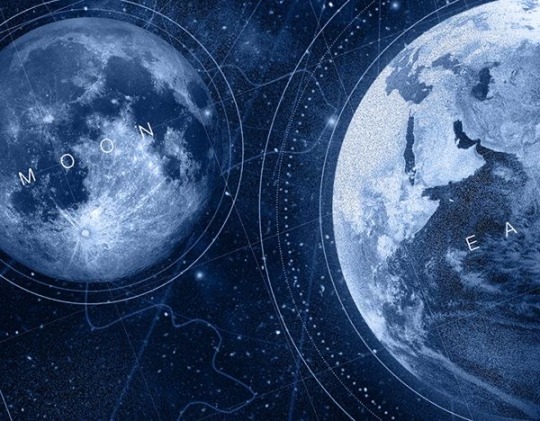

[READ] People often question why there’s so many meanings for each planet/house and the reason is so that you can learn more than just one thing about yourself through each placement. Otherwise astrology would be very vague and boring. These are all meanings that I’ve learned from my astrology classes at Kepler College

1ST HOUSE: identity/self, outward personality traits, outlook on life/approach to life, appearance, physical body, beauty, confidence, beginnings, how you initiate/ambition, your mannerisms, your outward behavior, physical fights, your presence, individuality, and passion
2ND HOUSE: money/finances (how we spend it, store it, and manage it), work, short term jobs, your work ethic, material possessions, self worth, values, emotional security, stability, financial security, how you meet financial obligations, your singing voice, giving/receiving, and resources (both material and non material)
3RD HOUSE: communication, your speaking voice/the way you talk, your mind, the way you think/your thinking skills, your perceptions, your opinions, your conscious mind, neighbors, siblings, interests, gossip, ideas/information, mathematics, literature, transportation (only ground not flying/air), local media, social media, cell phones, phone calls, visits, social activity, publishing, early education (before college), short trips, and short journeys
4TH HOUSE: homes/houses, family/family roots, your parents (particularly the mother/motherly figure), your inner child, emotions, foundations, your childhood, heredity, tradition, self-care, places of residence, real estate, properties, femininity, and conditions in early life
5TH HOUSE: children, childlike spirit, talent, creativity, drama, risk-taking, spotlight, romance (shows short term relationships, flings, hookups, and if long term relationships then only puppy love), hobbies, pleasures, objects of affection, vacations, games, speculation, fertility, concerts, festivals, and joy
6TH HOUSE: daily routine/day to day life/daily tasks, your health/fitness/the work you do on your body, your duties, self improvement, consistency, step-siblings, your hygiene, innocence, systems, service to others, co-workers, analytical nature, diets, animals, and your pets
7TH HOUSE: long term relationships, marriage, concern for others, attraction/attractiveness, charm, conflicts, partnerships, business partners, contracts, love affairs, open enemies, close associates, lower courts, negotiations, peers, agents, equality, harmony, and sharing
8TH HOUSE: major transformation, sex, death, longevity, changes, joint/shared finances, investments, stock market, your partners resources, taxes, inheritance, reproduction, seduction, intimacy (in general not only sexual), rebirth, merging, taboos, resurrection, loans, assets, secrets, mystery, businesses, spiritual transformation, magic (especially black magic), psychology, surgery/operations, trauma, periods, and the occult
9TH HOUSE: wisdom, law/laws, beliefs, religion, philosophy, higher education (college/university), viewpoints, languages, foreign environments, in-laws (your relatives through marriage), ethics, long journeys, travel, ideologies, higher courts, media, television, interviews, cross-cultural relations, grandparents, and learning
10TH HOUSE: your legacy, your career, your public image, your status, your reputation, fame, long-term goals, worldly attainment, sense of mission, responsibilities, recognition, authority, father/fatherly figure, experts, bosses, achievements, and professional aspirations
11TH HOUSE: friends, friend groups, gains, money made from career, desires, step/half parents, step/half children, uniqueness, inventions, technology, film, social awareness, influence, manifestations, hopes and wishes for the future, ideals, humanitarianism, associates (not just close ones), groups (in general), politics, social networking, where you make your debut into society, companions, allies, science, socialization/social interaction, clubs, organizations, and parties
12TH HOUSE: healing, the hidden, karma, karmic debts, old age, sleep, mental health, solitude/isolation, dreams (the ones you have when you sleep), hidden enemies, hidden causes, illusions, secret bed pleasures, spirituality, fears, losses, endings, escapism, impersonations, closure, need for withdrawal/privacy, afterlife, limiting beliefs, subsconcious memory, subconscious mind, hypnotism, self-undoing, hidden desires, the past, delay, and restrictions

MASTERLIST
MORE BEGINNER ASTROLOGY
PLANET MEANINGS

© 𝐚𝐬𝐭𝐫𝐨𝐬𝐤𝐲 𝟐𝟎𝟐𝟑 𝐚𝐥𝐥 𝐫𝐢𝐠𝐡𝐭𝐬 𝐫𝐞𝐬𝐞𝐫𝐯𝐞𝐝
#house meanings#astrology houses#houses in astrology#astro community#astrology#zodiac#astro placements#astrology tumblr#astro chart#birth chart#1st house#2nd house#3rd house#4th house#5th house#6th house#7th house#8th house#9th house#10th house#11th house#12th house
911 notes
·
View notes
Note
How do you think that halsin would feel/react about a tav that says stuff like “No, my mum is a bitch. So is everyone on that side of the family.”
I’ve just had that though bc ((as far as I’m aware)) halsin had a good home life; so idk if he would like get “offended” about tav talking that way about their family.
and because ur the expert on this i wanted ur opinion :3
Here's how I see it!
Halsin grew up in a supportive and loving family as far as we know, but at his age, he'd know very well that isn't the case for everyone; he is an empathetic person who is very aware of the evils the world can have. He even says he feels the city will destroy Yenna, "through malice or just neglect." Which means he is capable of recognizing non-physical violence as such- which means he would, I think, be able to understand mistreatment from family and be sympathetic. It would make him deeply angry, as wood elves are very communal beings who see raising a child as the community's responsibility- he'd see abuse as not only a failure of the parents, but the entire community for not stopping it.
83 notes
·
View notes
Text
Just adding this on, but this isn't an attempt on my part or an encouragement to harass these people, though I'm sure everyone reading this already knows that. Just a means of letting others know who's behind at least some of the harassment lately.
Alright, well, here comes the call-out post that I promised anon. Have fun with it, I guess. It's about to get long, folks. A group of @tsuki-no-ura followers, who's been obviously vague posting about me for months at this point, specifically targeting every topic I discuss on my blog by making counterarguments to it on their blog, even though I never directed any of my analysis posts or anything else at them, nor has anything I've ever written been in direct response to anything they've written, is certainly behind at least some of the harassment. And other than the times I've tried having conversations with tsuki in the past, when I used to follow them, and wanted to discuss their posts with them, which almost always went ignored, I haven't at all addressed them or made reference to them, either implied or specifically, in any of my analysis posts. I only made reference to them a few weeks back when I found out that they'd essentially said my defense of Levi's violence was tantamount to Nazism, which I wasn't going to let stand. That's the only time I've ever directly referenced them. And yet, every time I make an analysis post, a counterargument to it magically appears on their blog the same day or a few days later, something that was brought to my attention by a mutual of mine. I had no idea until a couple weeks ago that this was happening, because I stopped following them more than a year ago, and only just recently blocked them. But they're obviously stalking me. And, inevitably, every time they do this, a slew of anon hate messages get sent, both to me and various other blogs that I follow, or that follow me. This isn't a coincidence:
@clearavenuelover, @66honeybadgers, and I'm sure various other of their groupies, are the ones almost assuredly largely behind the anonymous attacks on Levi blogs over the last, several months. They start out with their passive-aggressive bullshit, and eventually, of course, it turns to outright hostility, because that's just who these people are. @clearavenuelover purposefully tagged me in one of tsuki's posts, and so obviously they're aware of their followers harassing other Levi fan blogs. This is the link to the post they tagged me and other Levi fan blogs in: https://www.tumblr.com/tsuki-no-ura/739123803956854784/okay-so-here-i-come-with-my-discourse-causing




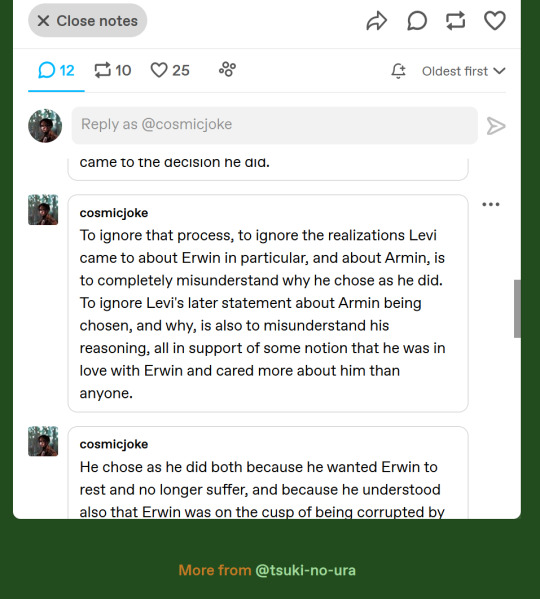
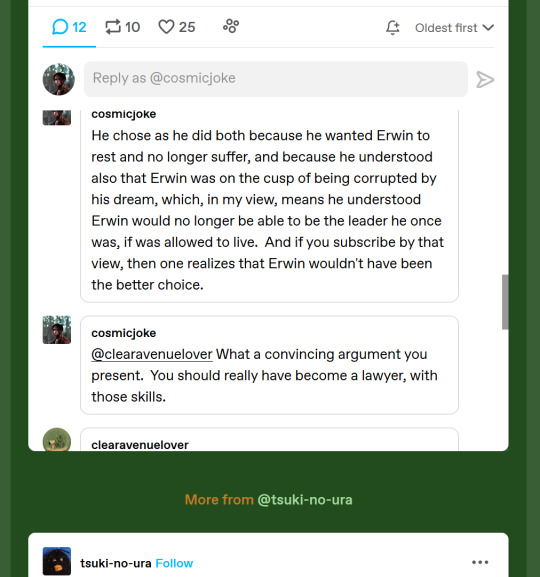
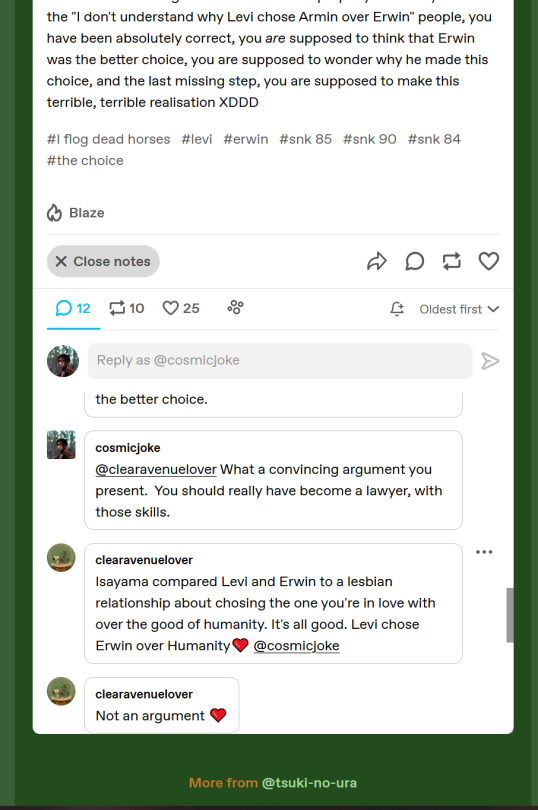


And yet more evidence that these people all congregate in the same circles and circle-jerk each other over how they think they're "winning" some non-existent contest against me and other Levi fan blogs.
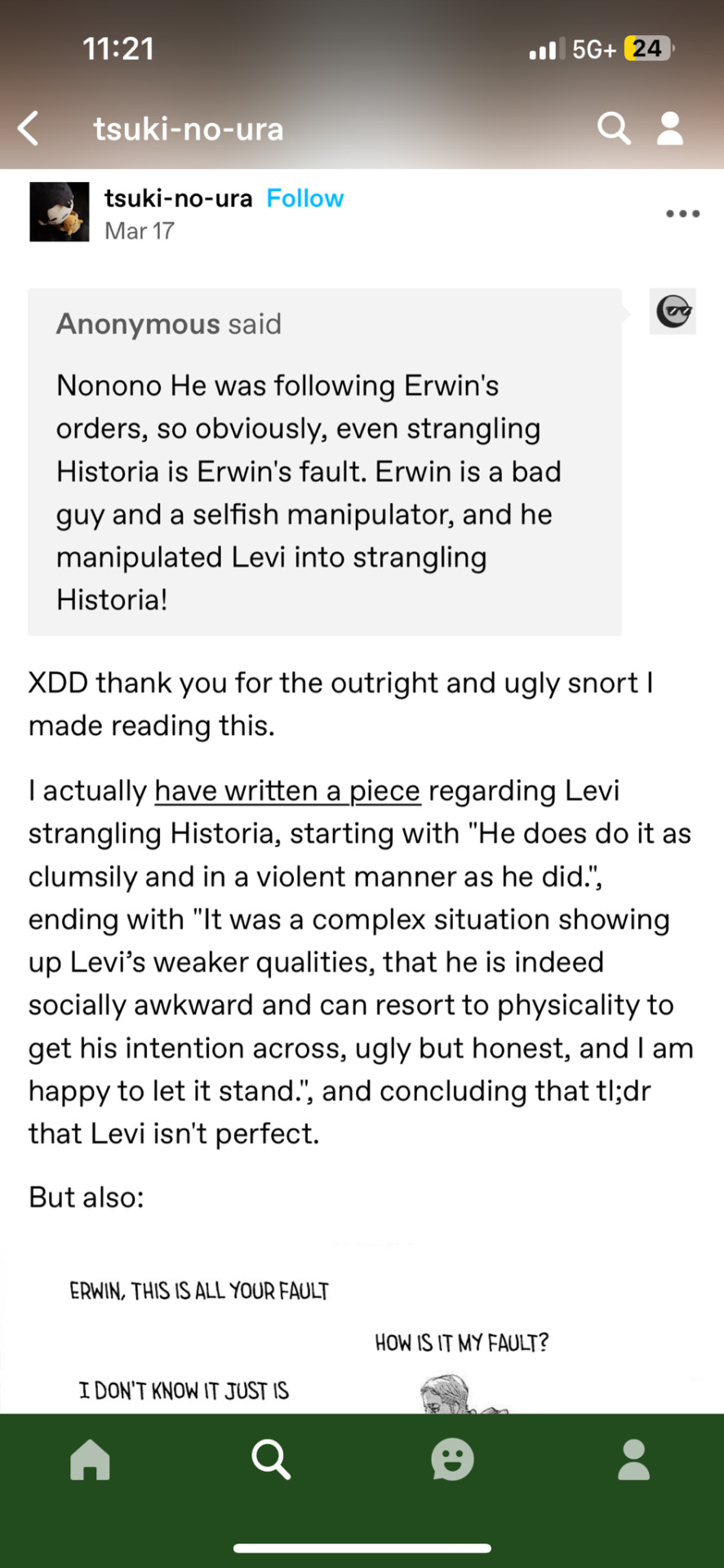

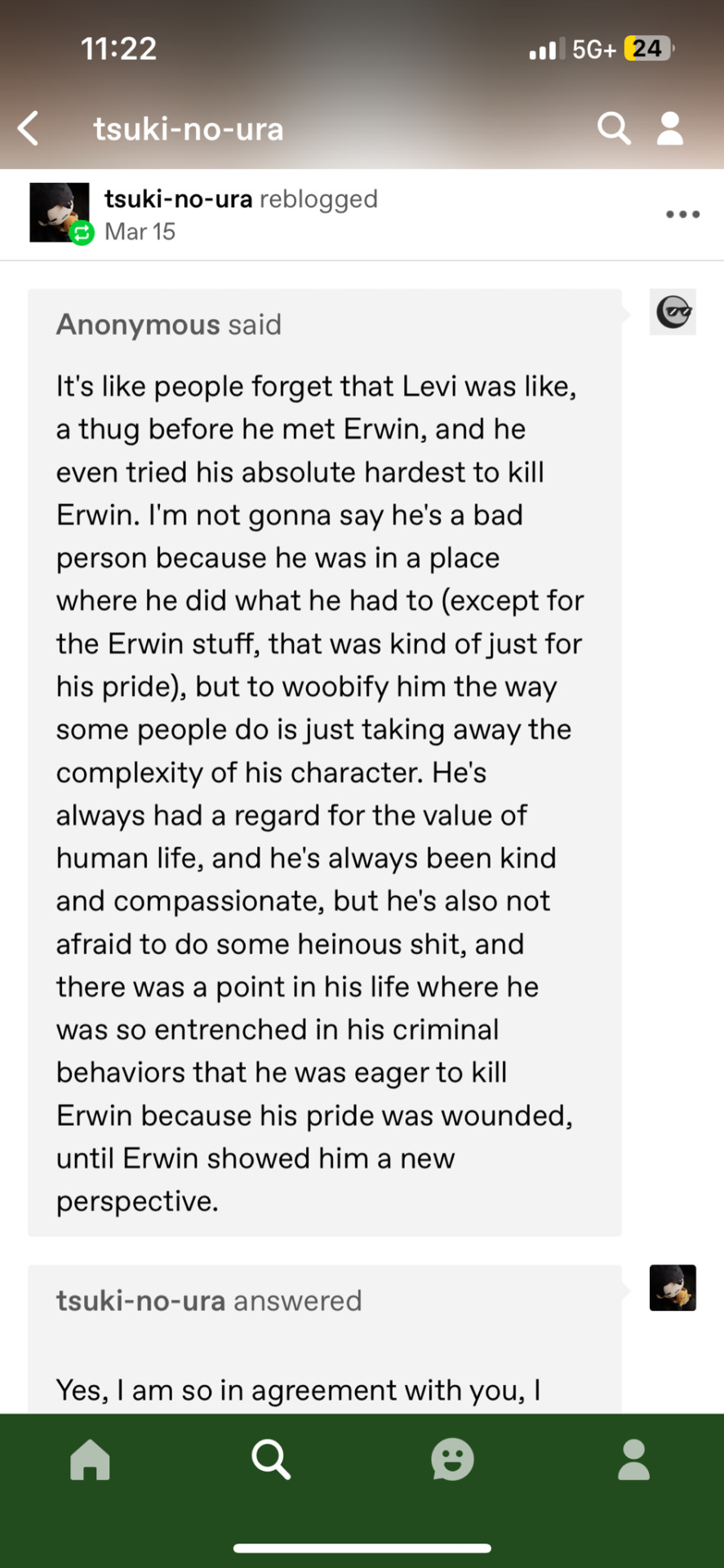

And look who liked this answer as soon as it was put up:
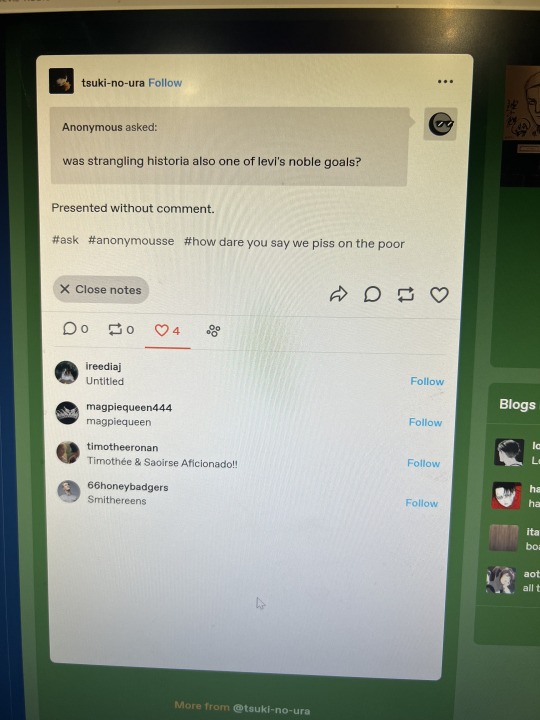
And here @66honeybadgers is again, name-dropping tsuki-no-ura while they continue to harass me:

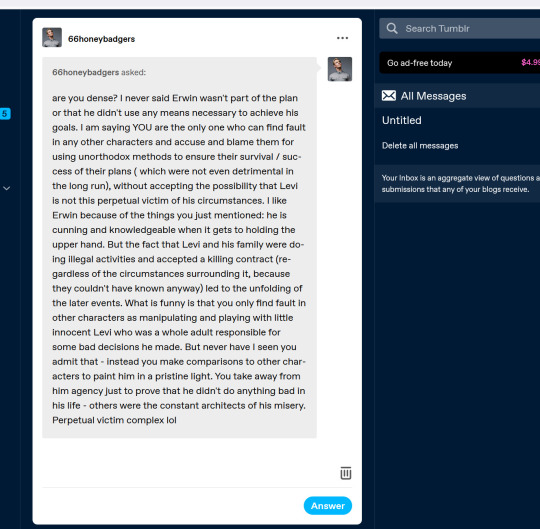
And this is clearly the same douche-bag that asked me a few weeks back if I considered myself a "Levi expert", and has now, over the last two days, continued to harass me for daring to express my opinion about Levi on my own blog, dropping the "friendly" act and showing their outright hostility:


This is clear harassment from a very specific corner of the fandom, mainly, surprise, surprise, eruri shippers, or even just Erwin stans who want to make everything about him, and get angry at anyone who dares to express any different view from the ones they hold, to the point of actively seeking out and stalking our blogs, hate reading our posts, going into our inboxs and sending us anonymous hate messages, trying to cram their opinions down our throats and then getting upset when we don't listen or accept their views. And then they want to go around acting like they're all the victims. What a joke these people are. Anyway, I just thought I should make this post so that actual Levi fan blogs can know to avoid and block these assholes. I can't say if they're behind ALL of the harassment, but they're certainly behind some of it, and it's good to expose them because they're cowards, and once they've been exposed, they won't have the fucking balls to continue.
#call out post#harassment#anon hate#anon asks#you asked for it#so now you're gonna get it#have fun with your new-found fame#anon discourse#discourse#anon harassment#fandom discourse
80 notes
·
View notes
Text
Level Up: Bells Hells Level 12
As always: are there errors or major omissions? Let me know! Your preferred feat or spell isn’t listed? That’s because it’s not my preferred feat or spell, and you should make your own post for your own preferences! Additionally, because level-ups are no longer done at the end of sessions but are rather their own separate videos, I now include speculation for the next level(s) since there’s often very little time to speculate on the current level.
Chetney: He could take another rogue level, as Fearne has, but I think leveling in blood hunter is by far the wiser choice, though Travis does have the rare carte blanche for being good at mechanics award I just made up. Anyway, rogue would give him cunning action, but blood hunter is a big one: hemocraft die goes up to d8, unarmed strike bonus goes up to +2, and he not only gains another use of hybrid transformation per rest but also can now regenerate a small number of hit points at the start of each turn while injured, which will improve his already impressive tanking prowess. Looking forward: I think he should stick to the single rogue level, honestly, and keep leveling in blood hunter. 12 is an ASI level, so: ASI to strength, int, or con, all key stats, would be best in my opinion. He could even out his wisdom score, but also he's rarely been badly afflicted with bloodlust and this party does not lack for wisdom but does need all the int, str, and stacks of HP it can get.
Laudna: You've already seen my thoughts on sorlock before (if you haven't, basically: I think it's not as strong as people think) so this is a bit tough to optimize. Anyway, warlock 4 is a very narratively valid choice if Marisha wanted to level in order to indicate the impact returning to Delilah has had. It would grant her an ASI/feat, another spell, and another cantrip. Personally, I am once again asking Bells Hells to get some intelligence; as a warlock base Laudna's WIS save is already pretty solid, though a DEX bonus wouldn't hurt her either. I don't actually have a ton of feats in mind since she came in with a bunch of feats. Meanwhile, if she continues in sorcerer, level 9 is something of a milestone level and grants access to 5th level spells (and a new known spell) in addition to the usual sorcery point increase. Ultimately this is a tough choice - I think sorcerer is the superior choice mechanically, but warlock might make more sense in-story. Looking forward: really dependent on which path she takes, honestly, but if she does level in warlock I think she should level in sorcerer next. [Note from JUST NOW: she's taking sorcerer; place your level 5 spell bets now]
FCG: It's an ASI level for the non-multiclassers of the group, and: Wisdom. Up wisdom. I don't care if it's a +1 feat or a +2 ASI, either are valid, but increase wisdom. Last time I mentioned skill expert and observant as options; skill expert is I think the better choice since Orym has observant covered. Looking forward: it's a quiet but powerful time for clerics; level 13 grants seventh level spells and pals, all of them are bangers. Plane Shift and Resurrection are the famous ones, but Fire Storm? Divine Word? Etherealness? Symbol? Not a dud in the bunch.
Fearne: She took rogue last time so I do hope she takes a druid level, because cauterizing flames seems thematically appropriate with the shard and with embracing her power -both its healing and harmful sides - and also it's a fantastic ability. If she does take rogue, I feel like thief is the subclass that makes most sense because in combat, she's going to be relying on druid powers, and thief provides some great out-of-combat utility (and is generally an underrated rogue class). Looking forward: I do like the idea of thief Fearne, but also, level 11 is when she gets Transport via Plants, which is pretty key. Level 11 has a bunch of other great druid spells, as fans of Keyleth during the Briarwoods arc would know: Heal and Heroes' Feast both overlap with FCG's abilities but it doesn't hurt to have access to both; giving Fearne Conjure Fey is particularly funny; Sunbeam rules and she's done great things with Daylight; and Bells Hells is already learning the value of Wind Walk.
Imogen: ASI level and I say even out your stats: + 1 each to INT and WIS. She has a lot of feats already and the only one that I think makes sense to take now is War Caster, but right now she does not have a great wisdom save bonus and again, even a +1 to INT wouldn't hurt (plus she is, iirc, proficient in investigation, making her better at it than anyone but Chetney, so another point in that won't hurt in this part). Looking forward: I am assuming she's going to keep leveling in sorcerer and if things happen re: Predathos or Kord it will be represented by a subclass change rather than a class change or multiclass, but watch this space. Anyway, level 13 is time for seventh level spells, and my vote is for teleport since FCG can cover Plane Shift, but I must admit I do love Prismatic Spray.
Orym: it's another ASI and he gets a zillion of them! My boring ASI-loving ass says +1 to INT and CON. He could also take Sentinel although the big three generals can all probably teleport so I don't know if it's that useful, but Mage Slayer probably would be. Looking forward: At level 13 he gets a second use of indomitable, which is great but there's not a ton to say about it. At level 14 he gets another ASI and he should take whichever of the recs I have up here he doesn't take at level 12.
Ashton: An ASI to them too. I feel the move is to max out strength at this point. The CON loss sucked but their CON was already very good; focus on hitting a little harder. Sentinel and Mage Slayer are also valid options for them, though I'd go for the ASI and let Orym, he of the zillion ASI levels, take those. Looking forward: Brutal critical comes at L13, and a path feature at L14; as their subclass is homebrew I have no idea what that feature might be, but I'm excited.
86 notes
·
View notes
Note
Hey, I love your account!❤️
I started my journey of being the highest version of myself. I wanted to ask some tips on how to be more intelligent and do you have some suggestions on podcasts, people you can follow that active on politics/history?
English isn’t my native language.
Thanks! ❤️
Hi love! Thank you so much <333 I can't think of any specific podcasts/blogs at the moment, but sharing some other advice below. Bisous xx
Here are some of my tips:
Read books, articles, blogs, studies, and journals from credible & fact-checked sources
Watch & listen to evidence-based documentaries and podcasts
Take expert-backed courses and classes (from universities, industry leaders/certified organizations)
Attend forums/lectures from industry leaders museums, libraries, etc. (Virtually or in-person)
Talk to people in different fields and from different walks of life
Travel (globally, domestically, or locally), explore museums, parks, and stores in your area
Ask for feedback on your creative or skill-based projects and work; or insights from trusted people in your life on different situations in your life, from your past, or their greatest life lessons
Remain curious and diligent regarding your pursuit of knowledge. Live as a lifelong student
For emotional intelligence:
Embrace self-awareness & self-reflection: Observe how you feel, behave, and how people generally respond to your words/actions in different situations
Practice self-regulation: Learn to differentiate between your feelings and the actions that would be appropriate in a specific setting or interaction. Internalize that feelings are fleeting and non-factual. You're in control of how you respond/(don't) act on these emotions
Engage in active listening: Pay attention to what others are saying with the intent of understanding, not responding
Focus on emotional differentiation: Understand where your thoughts, feelings, intentions, and opinions end and another person's identity/perception begins
Display radical empathy and acceptance: Understand that almost all people's words and actions result from their own beliefs, past experiences, and current life circumstances/priorities. Put yourself in their shoes when attempting to understand their choices, behaviors, and times they come to you to discuss a problem, success, or major life decision. Accept that you can only control what you do. Very little of other people's actions/the world's workings are personal. Things are happening around you, not to you
Let go of your ego: View yourself as objectively as possible with the potential for improvement. Abolish any superior complex or overwhelming desire to prove your self-importance in others' lives and decisions
Remain open-minded: Question your own beliefs and opinions. Stay curious as to why you believe them to be true/authentic to you. Allow your opinions to change or have the capacity to modify your beliefs upon hearing new information. Understand your worldview and values are valid, but they're not definitively correct beliefs, just because they resonate/feel comfortable for you
Be receptive to feedback: Embrace constructive criticism as a self-improvement tool. Approach it with curiosity and optimism, not as a personal attack
Differentiate between your feelings and capabilities: Your thoughts are not facts. Remember you can do things you don't feel like doing most of the time (work, waking up in the morning, working out, etc.). Learn the difference between being a slave to your emotions and genuinely running out of energy
#higher self#glow up era#glow up tips#knowledge is power#level up#femme fatale#dark feminine energy#it girl#the feminine urge#dream girl#female excellence#queen energy#female power#networking#career tips#educate yourself#personal growth#self improvement#femmefatalevibe#success mindset#successhabits#study tips#emotional intelligence#emotional regulation#emotional maturity#life skills
84 notes
·
View notes
Text
Bestiaryposting: Holghras Results
Now for what everyone -- or at least a certain percentage -- has been waiting for: the results for the Holghras! Anyone who found that sentence confusing can catch up by checking this page: https://maniculum.tumblr.com/bestiaryposting .
This time around, they should all fit into one post, as the response was a little smaller. I see how it is: everyone wants to draw Spooky Corpse-Eater With Magic, but nobody wants to draw Horny Bird With Problems.
I kid, of course. The Wutugald had some pretty clear visual elements that people could hook onto, but the Holghras entry is mostly about its behavior and doesn't give much information on what it looks like beyond "it's a bird". So it's pretty clear why people might have a harder time drawing artistic inspiration from that one. (And I really and truly appreciate those of you who took a crack at it anyway.) The level of physical description is going to vary a lot entry to entry, I'm afraid -- to some extent I think it's about whether it's an animal the reader is expected to be familiar with, but there are definitely a few detailed visual descriptions of animals most medieval Europeans would have seen because the author wants to do some symbolism. So it's a toss-up. Anyway, here's the link to the description people are working from:
And the results, again roughly in order of appearance. If yours isn't here, let me know -- I saw one post that said something about Tumblr eating their original attempt, presumably out of Bird Homophobia. I'm happy to reblog any that I missed due to Tumblr's functionality.

@bruncikara (link to post here) gives us our first interpretation. I really enjoy the medieval bestiary style, including the use of the Generic Medieval Plant that always reminds me of mutant asparagus. I think the border is designed to evoke the thorns in which the Holghras nests, which I also appreciate. The bird's pose, flat on its back with its neck curved up, is great, and it's shown performing its signature Hide With Dirt move. I think at least some of the inspiration comes from quails here, judging by the head... feather... thing... [Wikipedia break] ... okay, apparently it's just called a "plume", which I should have guessed. This is the first example of the common (and correct!) assumption that the Holghras is a member of the order Galliformes.
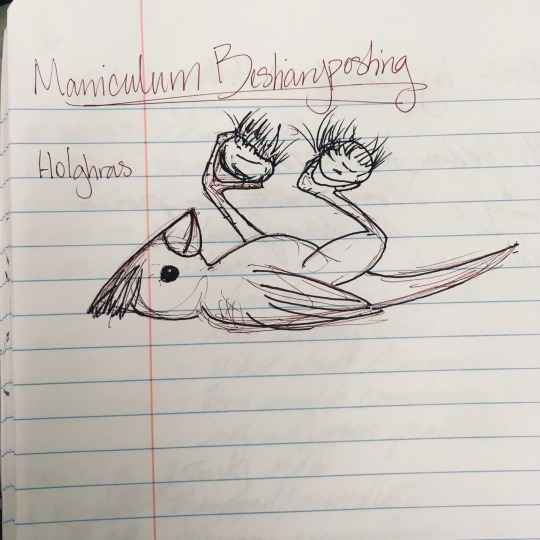
@jamiethekeener (link to post here) gives us this one, also posing with its signature dirt clods. I'm reminded of a cardinal, personally. The artist provides a brief comment on their design, noting that they are not a bird expert. I think this is a pretty cute juvenile bird, and the way it holds the dirt comes off as kind of playful.
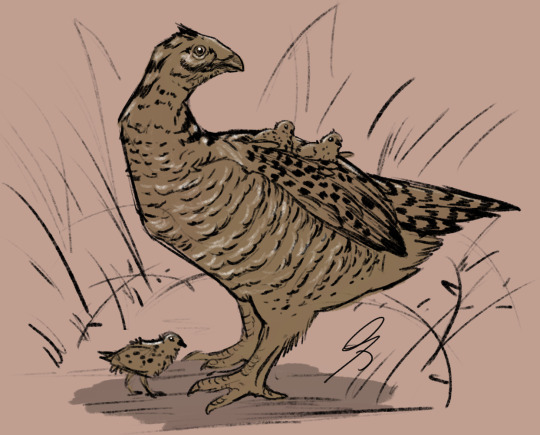
@silverhart-makes-art (link to post here) has produced another very naturalistic drawing, which (in my non-expert opinion) manages to look very much like a real bird without specifically looking like any bird in particular. They apparently do know birds, because they specifically name-drop Galliformes in their description of their design decisions. I like the decision to also include one of the bird's Signature Behaviors, i.e., the mother carrying her chicks.

@pomrania (link to post here) has given their Holghras a selection of striking features, which they explain in their post. There's a lot in that post, actually, and I really enjoyed reading the whole journey of this particular drawing. You should go read it too -- the post linked above also provides a draft version, a link to a series of progress sketches, and a link to an explanation of their design choices that includes rumination on how to make a bird look "slutty". Go check it out, we'll be here when you get back.

@sweetlyfez (link to post here) describes her design choices briefly, indicating that her goal was to pick Bird Attributes that could look unsettling in combination and suggest that the bird depicted has a "terrible sex life". Mission accomplished, I think -- that bird does not look trustworthy. Also now we know that thing on its head is just called a plume, so good for us. I really like the effect the -- watercolor? I think? I don't know art -- provides, and that seagull-esque spot on its beak really is a great touch.
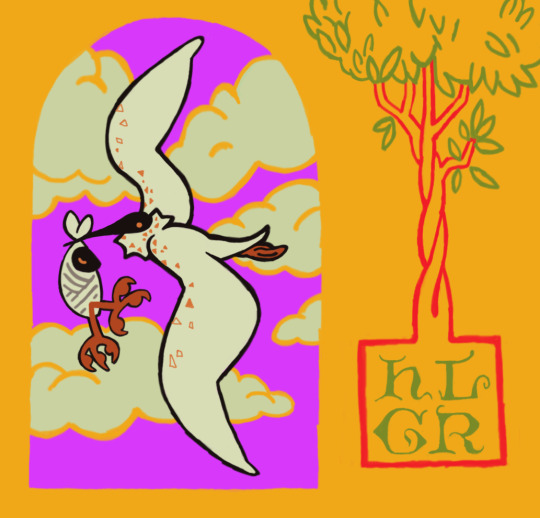
@rautavaara (link to post here) has done another beautifully stylized drawing with a very pleasant color scheme. They provide a brief explanation of their design decisions in the linked post. I'm particularly struck by the fact that this version of the Holghras apparently carries its young in the same way that the folkloric version of the stork carries babies: in some kind of cloth wrapping held in the beak. I also like that the chick's feet are sticking out.
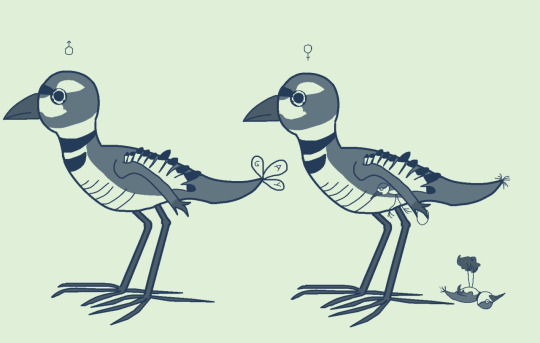
@mobileleprechaun (link to post here) apparently had some trouble posting this, but I'm glad they got it through, because it's delightful. I like the little bird on the right with its feet sticking straight up, and the other one under its mother's wing/arm. When I first saw this, I was briefly puzzled why the drawing contrasted male and female birds, because they looked quite similar -- then I noticed the tailfeathers -- then I looked more closely at the male's tailfeathers and cracked up a little bit. The linked post provides a brief explanation of the design decisions, including why the wings look so much like arms. It also has a couple tags that I find funny.

@karthara (link to post here) provides this excellent image as well as a brief explanation of their design choices. I love the over-the-top tailfeathers on the extremely-sexy purple male Holghrases, and the babies dangling from under the female's wing, and the fact that the clod of dirt being held up by the juvenile is at least as big as the bird holding it. Also, those ridiculous tailfeathers are apparently inspired by the Onagadori rooster, which means we're back with the Galliformes.

@embervoices (link to post here) did this adorable drawing of the juvenile Holghras. I particularly like that she's taken a different route than having it just hold up the dirt: this one apparently has a little hidey-hole like a trapdoor spider. This is just very cute all around, I like it.

@cheapsweets (link to post here) provides this excellent and action-packed depiction, along with a wonderfully detailed explanation of their design decisions. (I love reading those.) From their post, it's clear that they also know more about birds than I do, and also name-check the Galliformes as the most likely category. Apparently the bird-people of Tumblr have this critter's number. Also, that is a masterful depiction of a bird running off with an egg, I have to say.

@coolest-capybara (link to post here) has done another medieval-styled rendition, which I really enjoy. This is also, I believe, the first appearance of a human in any of these drawings. (Well. Live human, at least.) I enjoy the depiction of the female bird doing her fake limp to lead the human away from her nest while the males engage in their weird drama up in the right. They provide an explanation of their design choices and inspiration in the linked post.

@scarlettbookworm (link to post here) has given us a drawing that showcases several of the odd behaviors described in the entry. The linked post also provides a description of their design process and an explanation of their decisions. I think this is another very cute picture of a bird holding up dirt, and I enjoy the one at the top shouting "HOLGHRAS!" The egg-stealer over in the bottom right is very good also.

@moustawott (link to post here) has drawn this very vulture-like Holghras in what I have to say is a very well-done bushy area. I had to look twice to realize the background was actually cleverly-arranged splashes and blobs of color that strongly suggest that we're in a bush. Very good art, love the style, and that fuzzy baby Holghras is cute as hell. The linked post provides an explanation of the design decisions.
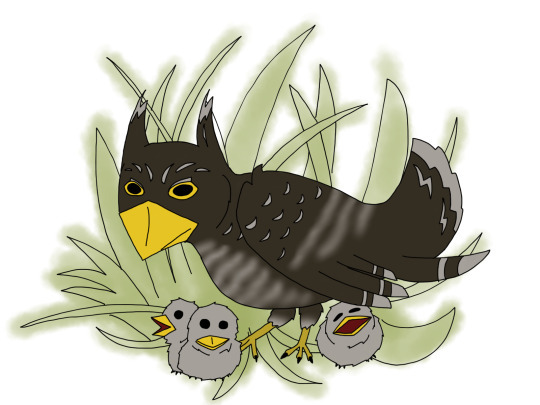
@strixcattus (link to post here) gives us this rendition of the Holghras, which they describe as being inspired by a prairie chicken and a potoo. Prairie chickens are, of course... Galliformes. Another tally mark in that column. I'm particularly delighted by the giant mouth on the chick in the bottom right. As they did last time, the artist has provided a detailed modern-naturalist interpretation of the animal, which is of course in the linked post. I recommend checking that out; maybe it's just because I'm the kind of huge nerd that I am, but I think these are great.

@treesurface (link to post here) gives us a Holghras that they describe as a cross between a bird of prey and a bird of paradise, which I think is a pretty good idea that fits both the aggressive behavior and the mating behavior described in the entry. I enjoy the fact that multiple artists have decided this bird Likes Big Tailfeathers (and it does lie, but about different things).
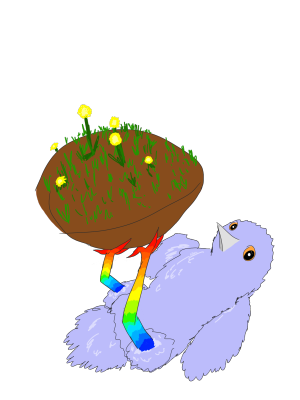
@ashfly (link to post here) gives us this picture of a juvenile Holghras holding up its clump of dirt. They also indicate that they have an idea of what it is, which I really hope they'll share now that it's posted and the bird's out of the bag, because I was 100% certain nobody would guess this one. The fuzzy bird is cute, of course, and the rainbow legs are really striking. (Pride legs, perhaps?) I also like that it's clearly looking over at the "camera" to see if we're buying it.
And finally, the official medieval depiction:

... hm. Yeah, some absolute bastard apparently cut out a bunch of the miniatures in this manuscript at one point. Luckily, we have the Ashmole Bestiary over at the Bodleian Library, which is extremely similar, so we can get an idea of the image that was here:

And also, this entry in the Aberdeen Bestiary comes with two images. Here's the other one:

I'm going to assume the choice of coloration was up to the individual artist and the missing Aberdeen illustration was also brown, because the Ashmole version of the egg-stealer also has the more colorful pattern:

Anyway, in case you haven't recognized it from these helpful and very accurate images, this is the partridge. Now you know what's going on in those pear trees.
I don't actually have anything else to add about that. I was frankly a little surprised there was even an entry for "partridge".
65 notes
·
View notes
Note
as a permanent resident of the star wars fandom and also someone who's a ben solo fan but a reylo disliker, i feel like i can add a little bit of clarity to "why hate reylo":
i think a main reason people dislike reylo has a lot to do with the fact that after the force awakens, the other "main" characters of that trilogy (finn and poe specifically, the two non-white men) were written to the side in a sense, while kylo ren suddenly was at the forefront of the movies alongside rey. the fact that finn's whole premise - a force sensitive person who chose to stop being a stormtrooper - was basically ignored to further develop the turmoil of the villain, which pissed off a lot of people who already had an idea in their minds of rey and finn being together.
personally as someone who lost interest in the sequels with the last jedi (perceived luke skywalker characterization crimes are unforgivable to me) i vaguely enjoyed finnrey and much preferred finnpoe or finnreypoe (that hug during the rise of skywalker 🫶 it's canon to ME) but never really watched the movies for ships. i remember even coming out of the last jedi and thinking there was no way they were actually going to make reylo canon. it didn't feel like they had any chemistry then and it still doesn't feel that way now, and i just rewatched the rise of skywalker while at star wars celebration last month for some goddamn reason so i'm basically an expert (that is a joke)
i very clearly remember watching the kiss scene in rise of skywalker and instantly bursting into laughter. it didn't feel earned, it didn't even feel relevant. it felt like they kissed because it said so in the script. that's just my own opinion, clearly other people think otherwise because there is still a dedicated reylo fan base even today, good for them! but i actually was genuinely shocked they went that direction. after shafting john boyega and oscar isaac in order to give the white leads more screentime, the whole concept of reylo left a bad taste in my mouth, even though i normally go crazy over enemies to lovers, the more crimes against each other the better, etc etc etc (i am also a danmei fan).
anyways if you like the concept of reylo but hate the execution go read star wars the high republic!!! hashtag axelgella nation. there are literally ten of us
i love u. thank you for the information and also recommendation LOL… i don’t have much to add onto this . again others are welcome to add on <3 we super appreciate yours & others’ thoughtful responses about this
164 notes
·
View notes
Text
So I’ve watched the whole 7 episodes of Mary & George -- no spoilers.
Quick word about it as I’m not sure how much I’ll go into more details later (that wasn’t so quick after all (who’s surprised? no one)). Obviously everything is my own personal opinion as a random nobody audience member.
Performances were all great. Directing was good enough but mostly forgettable, I guess. I can only think of one scene that could stick to my mind directing-wise and it’s the one between James and George with the checked pattern floor. This one was really good.
Pushing the dark sexy sex idea was definitely a marketing strategy that has very little do to with the whole show once you’ve done with the first (three?) episodes. I don’t really mind if there were a lot of sex scenes or not (I’m fine with either) but I always think that it’s quite tricky when the product you sell doesn’t really match the product the consumer gets.
Writing was the biggest issue for me. To be generous, let’s say there were half of the show that I enjoyed writing-wise and half that I didn’t. It was really slow to start for a only 7 episodes series and the last 1.5 / 2 episodes were… let’s say disappointing for me. (Again, regarding of the writing).
I am very aware that this is a fiction and the main purpose is entertainment and to be fitted for television and not actual accuracy but. I feel like the actual historic facts are way more interesting that whatever they wrote to fill the blanks. I don’t know what the Woolley’s book is saying exactly, as I’ve only read a few pages of it so far (but might read the whole thing to see by myself) and I’m obviously not a an expert (yet) of Villiers as I’ve only read one (French) biography of him (I have a second one I might read as well, just to check sources and informations) but there are many important points in the show that look like absolute non-senses regarding not only George as a historical figure but James as well. Again, I understand the need to bend things here and there to make a good television product but to see things that are opposite to what actually happened and who these people really were is a bit off-putting, I guess. Especially when, like I say, reality were so rich and interesting without having much to change about it.
The main asset of the show was definitely the cast and if they manage to made you a bit interested by this period of time, I can only encourage you to look for a biography or two and read them. There is so much more (in good and bad ways) about all of these people, what they were, what they were to each other and what they did than what they showed on screen.
26 notes
·
View notes
Text
My grand thesis on sadism
I'm not an expert on anything whatsoever, and studies on sadism are sparse to say the least, so I'm basing this on squinting at concepts I've seen elsewhere and a layman's gut feeling. Here's my thesis:
Introduction
Sadism is when someone feels emotional pleasure as a result of someone else suffering. That's about it, afaik. And yes, this does mean that that one time you said something mean to someone else in the heat of the moment to hurt their feelings, you were behaving sadistically. Sorry lol, sadism isnt a mythical creature, everyone is capable of it
Obviously, some people are more inclined to experience sadistic pleasure than others, which is where we draw that largely arbitrary distinction between sadist and non-sadist. My thesis is that this distinction is a tad more complicated than a binary spectrum: there are (at least) two different types of sadism, both of which play a role in what type of sadist a person is. Those two types are a) emotional sadism, and b) cognitive sadism. I made these terms up just now for the record
Emotional sadism
This is a type of sadism experienced by people who have alexithymic tendencies. Alexithymia affects about 20% of people. It's that thing where you're not very good at distinguishing or expressing different emotional states; distinguishing emotions from non-emotional bodily sensations such as hunger or fatigue, and; distinguishing between your own emotions from those you feel through empathy. (Loads of alexithymic people think they don't experience empathy; they do, they just don't attribute their feelings to other people.) Alexithymics will often have difficulty describing their emotions beyond negative, positive, or neutral. But some alexithymics, in certain regards to certain emotions, will have difficulty even doing that.
By attributing sadism to alexithymic tendencies, what I mean is this: You see someone suffering, and you feel a rush of adrenaline. But because you kinda suck at distinguishing this rush as the negative emotions felt by the other, transferred to you through identification and/or empathy - your brain interprets the rush as a positive experienced by you, which is influenced by, but still independent from the suffering experienced by the other. I hope I'm explaining this okay lol but this is the most plausible explanation I could come up with as to why sadistic ppls brains will interpret other people's suffering as a source of pleasure, because there is a significant correlation between alexithymia and the dark tetrad.
Cognitive sadism
Cognitive sadism can be summerized very sussinctly by this quote from C. Fred Alford:
Sadism is the joy of avoiding victimhood, though that puts it too passively. Sadism is the joy of having taken control of the experience of victimhood by inflicting it on another.
Cognitive sadism is an expression of control over the role of victimhood by imposing it on another person. I view this as the sub/conscious justification that drives sadistic actions, seperate to the emotional state experienced by the sadist after the act has taken place. These are, in my opinion, two seperate processes.
K, but so what?
Viewing these two things as seperate processes might help us distinguish between different types of sadists, by simply adding or subtracting. Here are some terms for what I mean that I also literally just came up with lol:
The Opportunistic Sadist: Experiences emotional sadism, but has no inclinations toward cognitive sadism. This means that they will experience sadistic gratification at witnessing the suffering of another, but they have no desire to be the one inflicting said suffering themself. (A good portion of yall are like this from what I've seen)
The Remorseful Sadist: Seeks control by imposing victimhood on others, but can distinguish their empathetic response as other-oriented and distinctly negative, leading to intense feelings of guilt/shame/remorse/whatever after the fact. (Industry secret: a large portion of people who broadcast themselves as hardline sadists secretly fall into this category. They'll never admit it lol)
The Pure Sadist: Experiences both the alexithymic empathy response and control-seeking inclinations. What most people think of when they conceptualize sadists; people like this are pretty rare in my experience? But I also have no data on it so like.
Anyway here's a graph I made:
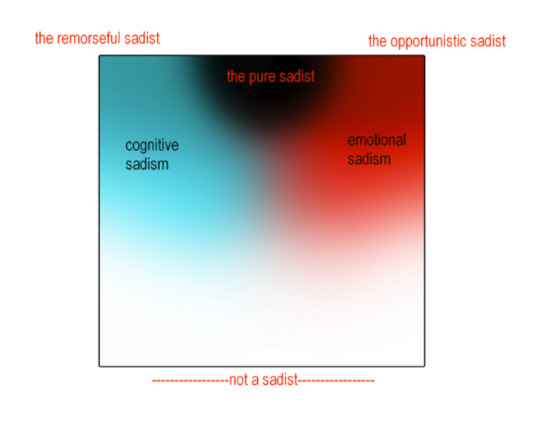
The graph means I'm basically an academic about it lol idk
Conclusion
Fuck if I know, I'm just thinking thoughts about it for now tbh
21 notes
·
View notes
Text
Kinktober Day 1 | Somnophilia



Eddie Munson x Steve Harrington

TW: somnophillia | smut, anal penetration (male receiving), anal fingering (male receiving), slight consensual non-con, slight daddy kink
Word Count: 1.6K
Taglist: N/A (Message me if you want to be added!)

Sleep. A state of reduced mental and physical activity in which consciousness is altered and sensory activity is inhibited to a certain extent. And in Eddie’s own, humble opinion; a state in which Steve Harrington looks his prettiest. His most,, well, what’s the word for it? Relaxed! His most relaxed. Most nights at least. When there are no furrowed brows plaguing his features, no frowns that might warrant any signs of aging, ones that Steve would only fret about later; and the cycle continues. A state in which he doesn’t have to worry about all of the problems of the world outside of this bed. No parents, no kids getting themselves into trouble, no inter-dimensional monsters reigning down on Hawkins. It was just him, and Eddie. And blissful slumber. And the best part; Steve looked absolutely delectable like this.
Dressed in nothing but his stupid little green basketball shorts, and one of Eddie’s shirts (one, very loved, very worn Black Sabbath shirt, cut tastefully into a crop top). His lips parted, and puffy, and is that— is that drool? It was! Glistening at the corner of his mouth and pooling on his pillow. He looks dewey, flushed. Ethereal. Eddie could write novels about him. He just might change professions and do so.
Steve’s brows pinch at the bridge of his nose. His lips turn downwards into a soft little frown within seconds, and Eddie’s big brown, doe eyes watch as he rolls over to be on his tummy, rather than on his side, and facing him. His head is turned away, and he hikes a leg up. The mattress squeaks the slightest bit underneath them, and the sheets fall delicately from his body with his movements. And Eddie would surely be ostracized if anyone ever found out the filth that runs rampant behind an innocent gaze. He couldn’t help it though! Not with Steve’s ass on display like that. Luckily for Eddie though, his counterpart wouldn’t mind all that much. After all, Steve was the one to bring up this whole idea. He was the one to confess that he’d dreamt of being played with, ogled over during his sleep. By Eddie. Came to him with a whole, huge spiel about it actually.
“So— I mean,, you don’t think I’m some total freakshow for it? Because like— look, man, I totally get it if you do. It’s not everyday some guy,, some guy asks for something like that, right?”
Like that. Hesitant, as if Steve can’t even begin to even think about what he just asked for. Like it was embarrassing. Something that shouldn’t even be spoken, lest he be outed as some kind of kinky freak in the sheets. And to be fair, he was.
“Steve,” Eddie can’t help the smile that spreads out across his cheeks, and god, help him when he snorts trying to choke back a laugh, only to receive a warning in the form of Steve exhaling rather hastily through pursed lips, crossing his arms in front of his broad chest. “Stevie, darling, light of my life, please tell me you’re joking. Take a look at who you’re talking to. If anyone should be judged here, it’s me, really!”
Steve isn’t convinced. Nor, is he amused. That look on his face doesn’t falter in any capacity. In fact, it deepens. Those pursed lips turn into a scowl, and he huffs yet again, but before he can retaliate— Eddie can hear him now! ‘Come on Eddie, can’t you ever take me seriously?’— he jumps in.
“Look— I’m just saying… you don’t have anything to worry about, man. Not with me. I’m into much worse shit, and you know it, baby. Plus,,” And Eddie smiles. Bashful in a way because Steve is the expert at that, his eyes twinkling as he climbs up onto his knees to inch his way closer to the brunette tucked into the corner of his bed. Their noses brush, and he hums. One of Eddie’s ring clad hands finds Steve’s cheek. “I think it’s cute. Honorable even. I shouldn’t waste my time just watching you all night. Not when you just want to make yourself useful, even in sleep,, isn’t that right, sweetheart?”
That finally gets a smile. The corners of Steve’s pouty, pink lips quirk up, and his skin burns under Eddie’s touch. “Right.”
Right. Of course, deeper, more in depth conversations were a must before they could’ve gotten to this point, and they’ve had them, multiple times over but if anything, Steve’s been waiting for this. He was very specific too in his request. He didn’t want to know when Eddie might do it. He didn’t want to be warned. He just wanted to be woken up, stuffed full. Or better yet! He wanted to wake up in the morning with cum dripping down his thighs. Having been completely unaware of what happened while he was unconscious. Eddie wonders what outcome they’ll get tonight. He guesses he’ll have to just wait and see.
Now though. Now, he’s reaching out. His hand, large with calloused fingers finds the span of Steve’s back, and rubs lightly as he coaxes himself into a new position, propped up on an elbow. He runs it down the curve of his spine, and lifts up the hem of his crop top. Fingers tread carefully over olive toned, mole-kissed skin. He traces over them for a moment, his breath shaky as he connects mole to mole, as if creating little constellations with every single little mark. And then his fingers dip down further. Dipping past the waistband of those shorts, and tugging them down, slowly as he can possibly bear to go. Further, and further, until… there we go!
“Oh, Stevie,,” Whispered, gentle words, as if this was some sort of sight to be marveled, completely awe-struck. If there was one thing about Steve that Eddie couldn’t get enough of, it was the hair that covered nearly every crevice of his damn body. His chest, his ass, his tummy, his thighs,, that iconic head of hair. He wasn’t called Steve ‘The Hair’ Harrington for nothing, right?
He groans. Watches with intent as he lets the tips of two— yes, you heard it correctly, two— fingers massage the entrance of his hole, and really, it’s criminal the way they slip inside so easily. Stretched out already from that morning, with residual cum coating the pads of his fingers already. He didn’t need any of the extra help, but it wouldn’t hurt right? Just in case. It gets Steve hard too. A half chub bulging, and still enveloped in nothing but green shorts as they’ve just been pushed down to reveal what’s needed. Eddie leans in closer, and pushes his lips against Steve’s shoulder. Places kiss after kiss to the broadness, until his fingers have sunk in down to the knuckle, and just as he does, it gets a soft gasp in response. A little shift in movement, Steve rutting his hips backwards. Eddie halts.
It turns out to be a false alarm. Always such a deep sleeper, this one is. Thank god.
He begins to move. Fingering Steve slow, but deep, until he begins curling them. Pushing against plushy, searing hot walls, sinking them in, and bringing them back out in fluid motions, over and over again, until all of those little intricate subtitles of an oncoming orgasm begin to sprinkle their way into Steve’s body language. Squirming, heavy breathing, furrowed brows, a rosiness to his skin. He can’t help but wonder if he’s dreaming. If Steve was just the slightest bit aware of what was happening right now. His fingers slip out.
“You ready, big boy?” He teases, rhetorical, of course because he isn’t looking for an answer here. No, Steve was to stay asleep, but Eddie couldn’t help but run his mouth, even when the situation didn’t call for it. He reaches blindly for the lube in his bedside drawer, and snaps it open with an ease you can only really achieve with pure muscle memory. His other hand pushes down his boxers until his cock bounces out from its confines, and in seconds he’s lubing it up. He hisses when it makes contact with his skin, cold to the touch as it squirts out of the bottle. With that tacky bottle discarded somewhere on the bed, he scoots over, one hand on his cock as he spreads the slippery lubricant over it, fully, lining up with Steve’s hole. Gaped open, and ready for the taking. “You’ve been so good for me.”
As he pushes in, he’s met with no resistance. Steve is supple, and warm, tight around him, and it takes all the effort Eddie can muster not to live the rest of his life as a one pump chump, but miraculously, he doesn’t cum. Yet. First the tip. Then he sinks in halfway. He has to stop again there, one hand, lubed covered on Steve’s hip, and the other positioned above his head. He wrings his pillow between his fingers with a groan, a strained nose that he tries to hold back. Holy shit. Closer, closer. He eases back in, just a few more inches, until— Jesus Christ.
“Eddie.” Hazel eyes snap open, frantic, just for a moment, though they’re clearly glazed over with a certain sleepiness. A hand finds Eddie’s hip, weak, and fingernails dig into his skin, but Steve doesn’t push. He doesn’t voice any sort of want for it to stop. “Daddy. Oh, s’full. S’so,, shit. M’tired.”
Eddie smiles. Let’s out a breathy excuse of a laugh, and leans in. He noses at Steve’s jaw, his breath hot and damp against his skin. He ruts his hips forward, knocking out another gasp from the boy beneath him. Oh, Steve was so perfect wasn’t he? So pliant, and by the looks of it, seconds away from letting Eddie fuck him right back to sleep.
“Oh, you poor thing. Just rest your head for me, Stevie,, daddy’s got you.”
#steddie#steve harrington#eddie munson#steddie fanfic#kinktober#stranger things#stranger things fic#steve harrington fanfic#eddie munson fanfic
58 notes
·
View notes
Note
Thank you for your many insightful posts on the current conflict going on. The one giving a detailed breakdown on the "who was there first?" argument was particularly helpful given that, as someone very familiar with the "Land Back" movement in America, I struggled from trying to approach the Palestine issue from that same perspective.
I did have something else I've been struggling with that maybe you can help me out on, though: I've seen "Zionist"/"Zionism" used a lot to help separate those who endorse the concept of a modern state of Israel from Judaism as a whole, since a very large portion of the Jewish community doesn't support what Israel is doing. For me personally, however, I've frequently seen that word used as a dog-whistle for antisemitism in general (most infamously in relation to The Protocols of the Elders of Zion), so I've been kind of wary about using Zion/Zionist in regular discussion. Did I just have a misinformed first impression towards using that term, or is it indeed something we still have to be careful about using even in regards to current events?
Hello! I hope you don't mind me publishing my response, in case anyone has further information to share on the topic of zionism. I am by no means an expert on this — I'm kind of synthesizing various posts & articles I've read over the years to write my answer, and I may be missing some important elements. I welcome correction or added info from anyone with more knowledge than I.
I'm with you in feeling there's a need for care when encountering talk of "zionists," because this term is indeed bandied about inappropriately. Just here on tumblr, I've seen various Jewish folks speak out about how freely people label any Jew with an opinion they don't like a "zionist" in order to dismiss any concerns that Jewish person tries to raise.
So when "zionist" is used to mean "any Jew I disagree with," or "all Jews," or anything not specifically related to "movement in favor of a sovereign Jewish state (e.g. modern Israel)," it's being used incorrectly and harmfully.
...And ugh, it's bad enough when randos on tumblr are doing it; it's been disturbing to see political leaders and activists and the like doing it on a wider scale these past few months.
We all need to be able to talk about the very real issue of zionism without contributing to antisemitism. How do we do that? Here are some rules of thumb I follow (and again, I welcome more if anyone has other tips):
I educate myself on what Zionism actually is. This article on the Jewish Voice for Peace site is super helpful as a starting point. It discusses where this ideology originated, how zionism takes various forms, and how Zionism is harmful for Jews (for instance, it's harmful because it rejects the diaspora as "inherently toxic and unhealthy for Jews," which means rejecting elements of Jewish culture that have arisen from diaspora).
I resist wondering if a Jewish person is zionist / pro-Israel without any reason to think they might be. (I've seen a couple posts from Jewish people now saying that gentiles do this to them. It's super inappropriate and antisemitic to do this — after all, we don't demand that of every non-Jewish person, so we shouldn't be demanding it of every Jewish person.)
If I see a claim that X person is a zionist, I don't just take that claim at face value; I investigate. See if that person has self-identified as a zionist anywhere, etc. If I can find no evidence, I don't spread that claim around; and I might reach out to whomever posted it to ask what gives.
I focus my time, energy, and concern on zionists / people who are pro-Israel in my own communities — rather than running around declaiming every Jewish zionist I can. As a Christian, I focus on trying to cultivate conversations with fellow Christians whom I know hold zionist or philosemitic views; those are the people I'm more likely to be able to change, after all. For any other Christians interested in what Christian zionism tends to look like and how to combat it, I highly recommend this post.
(Another helpful post tangentially related to this topic is this one about "the three Israels")
39 notes
·
View notes